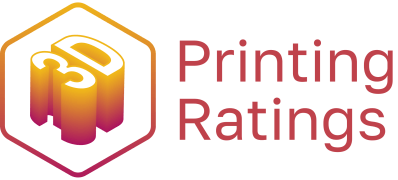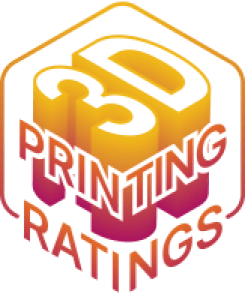Do you require a larger 3D printer to expand your printing business? If Yes, the Anycubic 3D printers are the best options for you. It now has two of the most popular series. We will be going over the comparison between the Anycubic Chiron vs. Vyper. They have a lot of great features that will blow your mind, as evidenced by their performances.
So, let us take a closer look at the Vyper and Chiron 3D printers from Anycubic.
Anycubic Chiron
Anycubic’s Chiron is a type of 3D printer that produces a larger print result than any other 3D printer on the market. It has a print frame of 400 mm x 400 mm x 450 mm. With its fantastic printing quality, this frame can help you build more volume in a large size.
Anycubic Chiron has a modular design that makes it simple to put together. Quick assembly increases productivity and saves time. This machine allows you to enjoy your creations and print them without difficulty. This machine is ideal even for beginners due to its simple installation.
The Anycubic Chiron’s structure is made of high-quality materials, making it extremely durable. It is made of aluminum, and the extrusions are held together by sturdy metal T-plates. These materials ensure greater consistency and stability during the printing process.
The wiring on the Anycubic Chiron is extremely neat and tidy. You will not have to be concerned about the cable during printing. It is extremely safe and will not interfere with your printing process. It will also not obstruct your printing result, allowing you to see your printing shape through the leveling cables.
The filament on the Anycubic Chiron is made of TPU, which is extremely flexible to use. The massive extruder is a perfect match for the E3D V6-like. These features will smoothen your printing process with the Ultrabase features built on this machine.
The Anycubic Chiron’s dimensions are 29.3 x 26.1 x 10.4 inches, weighing 20.5 pounds. The price is also very attractive.
Specifications
- Maker – Anycubic
- Model – Chiron
- Technology – FDM
- Frame – Cartesian
- Year – 2018
- Category – Desktop, preassembled
- Print area – 400 x 400 x 450 mm
- Max. bed temp – 100°C
- Nozzle size – 0.4 mm
- Max. nozzle temperature – 260°C
- Max. Z-axis resolution: 50 microns to 300 microns
- Z-axis accuracy: 2 microns
- X/Y-axis accuracy – 12 microns
- Max. print speed – 100 mm/s
- Max. travel speed – 60 mm/s
- 3rd Party material compatibility – Yes
- Interface – TFT display
- Boxed size – TFT display
- Printer size – 651 x 612 x 720 mm
Pros
- A cinch to set up
- Ultrabase Pro print bed is exceptionally good
- The fast-heating bed gets hot edge-to-edge
Cons
- Quality control issues
- Automatic bed-leveling isn’t automatic
- Quirks and irritants plague the printer
Anycubic Vyper
When it comes to high-quality 3D printers, Anycubic is a household name, and the Anycubic Vyper is no exception. This machine was a long-awaited invention that completely transformed the filament 3D printing market.
This 3D printer has many useful features that many users appreciate. Anycubic is well-known for its dedication, manufacturing research, and development. They prioritize simplicity, professionalism, and creativity.
Now, let’s take a look at some of the features
Auto-Leveling Function
Having a 3D printer with auto-leveling simplifies things even more. Many filament 3D printers used to require manual leveling. Still, the Anycubic Vyper now joins the ranks of more modern machines with a feature that automatically levels your print bed and nozzle.
The intelligent leveling system takes care of everything and should stay level for a long time. If your build plate is uneven, the one-touch leveling feature is a great way to solve the problem. Whether you are a novice or a seasoned pro, you will appreciate the automation.
32-Bit Silent Motherboard
Because silent printing is critical for maintaining a stable environment around your 3D printer, having a 32-bit silent motherboard is ideal. You can also use the Cortex-M3 architecture control chip to boost the Anycubic Vyper’s computing speed.
You also have the TMC2209 silent drivers, which allow you to heat up faster, print faster, and with greater accuracy.
Double-Gear Extruder System
A very useful double-gear extruder system ensures that your filament is fed through the extrusion path more steadily and smoothly. It aids in the reduction of filament tangles, allowing you to print models with fewer errors and problems.
It is a step up from older models like the Anycubic Mega or other FDM 3D printers on the market.
This innovative design increases extrusion force while also optimizing the path for your filament to follow. Due to this feature, the Anycubic Vyper can successfully print flexible filaments.
Dual Z-Axis Leadscrew
Unlike printers such as the Ender 3 or the Flashforge Finder, the Vyper has a dual Z-axis leadscrew design that runs synchronously on both sides of the machine, improving stability significantly.
The Z-axis accuracy is improved by automatically compensating for movements across an unevenly heated bed.
Patented Z-Axis Gap Elimination Module
Anycubic decided to include a patented Z-axis hap elimination module to improve the smoothness of the Z-axis movements and reduce printing layer marks. It is critical to be able to reduce layer lines and improve printing accuracy to achieve the best results.
Specifications
- Printing Technology: FDM (Fused Deposition Modeling)
- Build Volume: 245 x 245 x 260mm
- Machine Size: 508 x 457 x 516mm
- Support Filaments: PLA, TPU, ABS, PETG, Wood
- Slicing Software: Cura
- Nozzle Temperature: ≤260℃
- Hot Bed Temperature: ≤110℃
- Positioning Accuracy: X/Y:0.0125mm;Z: 0.002mm
- Print Speed: <180mm/s (recommended 80-100mm/s)
- Input Voltage: 100V/220V AC, 50/60HZ; Output Voltage: 24V/14.6A (350W)
Advantages
- Stable and smoother filament feeding
- Reduced filament tangling
- Z-axis has smoother movements and reduces the event of layer lines
- Relatively large build volume of 245 x 245 x 260mm
- Quick assembly
- Noiseless printing compared to other filament printers
- Great print quality right out of the box.
- Incredible customer service and 1-year warranty
Disadvantages
- Some users had problems with interface errors based on the filament sensor – a firmware upgrade was enough to fix this.
- Quality control issues in the early stage had users experiencing errors – SD card not reading, auto-leveling being broken, defective motherboard, Z-axis motor stalling, nozzle running into bed after auto-leveling due to level sensor.
- The extruder could break after just a few days of printing before returning the machine
Discussion of the Anycubic 3D Printer Comparison between these incredible machines is a bit difficult. One clear thing is that both will be a good purchase and give value for money



